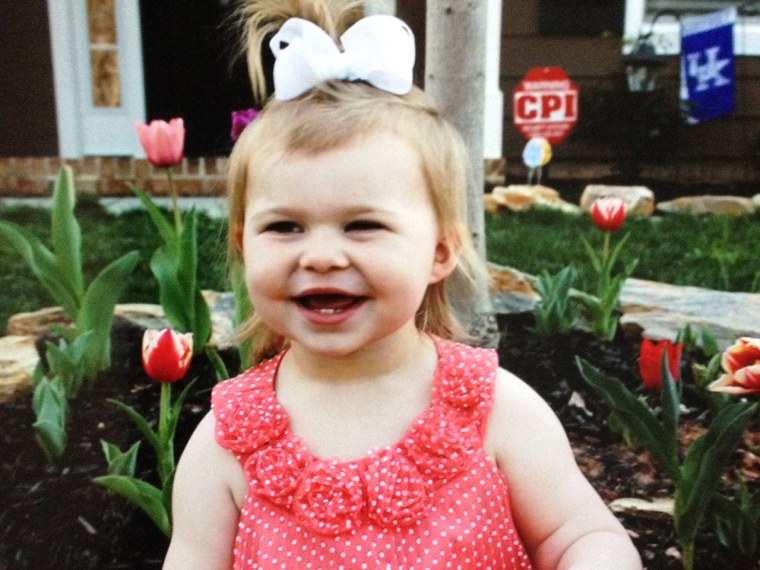A high chair is not always the safest spot for baby, according to new research that finds a significant increase in injuries related to high chairs and booster seats.
The number of high chair-related injuries increased by more than 22 percent between 2003 and 2010, according to a nationwide study. The study, published Monday in the journal Clinical Pediatrics, found about 9,400 high chair-related injuries were treated annually in U.S. emergency rooms. Falling caused most of the injuries and head injuries, such as concussions, were the most common diagnosis.
“We have more than 9,400 injuries a year. That’s a child every hour in this country that’s injured from association with a high chair,” said Dr. Gary Smith, one of the study researchers and a pediatrician at Nationwide Children’s Hospital in Columbus, Ohio, told NBC News.
Researchers aren't sure why injuries are increasing, but Smith said they know high chairs can be dangerous in several ways. One is that high chairs tend to be elevated above a typical chair height and are often used next to hard tables or counters. “So when a child falls, they often strike their head on a very hard surface with a considerable amount of force. This can lead to a very serious injury, “ Smith said.
Also, many parents and caregivers are not strapping in children correctly. “When it was documented what the child was doing immediately prior to a fall, two-thirds of those children were either climbing or standing in the chair. Which tells us that one of the things that parents need to remember is those children need to be strapped in…to prevent those kinds of injuries,” he said.
Kelli Waggoner of Waxhaw, N.C., mom to 3-year-old Harper, got a scare last year when Harper flipped over in her booster seat, which was attached to a kitchen stool. Harper was strapped into the booster seat but used her legs to push off from the island kitchen counter.
“I went to go cut peaches for her and then I heard this boom. She had flipped over, and I grabbed her and unstrapped her,” Waggoner recalled. “I felt the bump [on her head] come out and I knew that was a good sign.”
But when she noticed that Harper was acting strange, Waggoner drove her to the hospital and, on the way, noticed that her daughter was passing out in her car seat. “I kept my cool until I got to the hospital and then I lost it,” she said.
Harper had a hairline fracture on her skull but has fully recovered from it. These days, however, Waggoner doesn’t let her daughter out of her sight when she is eating in her booster seat and keeps her pushed out further away from the kitchen island. “I never would have thought she could reach that island to push off,” she said.
Smith understands that families often push a high chair close to a table so that their child can feel like part of the family during meal time. However, in addition to using the table or kitchen counter to kick off from, kids can also get hurt by reaching for hot liquids and sharp objects.
Mostly, parents need to make sure they use the high chair’s restraining system properly. This includes using safety straps and not just using the tray as a restraint.
“That is going to be the number one way to prevent injuries associated with high chairs,” Smith said.
Tracy Mehan, a child safety expert and research manager at the Center for Injury Research and Policy at Nationwide Children’s Hospital, says there are many ways parents and caregivers can make sure their child’s high chair is safe.
For starters, look for a sticker on the back of the chair, or on the product box or brochure, from either JPMA (Juvenile Products Manufacturers Association) or ASTM (American Society for Testing and Materials). That tells parents “it’s been approved for safety standards,” Mehan says.
Other tips from Mehan:
- Make sure the high chair has safety straps with either a 3-point or 5-point harness.
- Make sure it has a crotch strap.
- When you buckle the child in, make sure the straps are attached firmly to the chair and that they're snug around the child so he can't wiggle out.
- When you set up the high chair, put it in an area where the child cannot reach anything and make sure it’s away from the table or a wall or counter so they can’t kick or push the chair over.
- Use booster seats that secure to a chair and have a tray, and make sure they are firmly attached, with no wiggle room.
- In restaurants, make sure the high chairs or booster seats they provide have functional straps that are in working order. If they don’t, ask for one that does.
Lastly, Mehan advises that parents should periodically look at recall lists for high chairs and booster seats at www.recalls.gov.
